Episode #378: Create End of Year Impact | Adopt, Adapt, Abandon For Your Math Program
LISTEN NOW HERE…
WATCH NOW…
As the school year winds down, it’s time to reflect—not react on your math impact. In this episode, we dive into one of the most important (and often skipped) parts of sustainable change for math programs: reflection and intentional decision-making.
Using the Adopt, Adapt, Abandon protocol, we’ll guide you through how to evaluate what worked, what can be improved, and what truly needs to go in your school or district math program. Plus, we’ll share key insights and cautionary tales from the districts we support across North America.
Our biggest advice? Don’t toss everything out for the next shiny thing. Momentum matters. The flywheel is turning—let’s not start from zero again.
In this episode, you’ll discover:
- How to use the Adopt, Adapt, Abandon protocol effectively for math programming.
- Why reflecting with evidence is critical before making changes to your math plan.
- How to avoid losing momentum by jumping to new initiatives too quickly.
- Lessons from other districts: what worked, what didn’t, and what they’re doing next.
Attention District Math Leaders:
Not sure what matters most when designing math improvement plans? Take this assessment and get a free customized report: https://makemathmoments.com/grow/
Ready to design your math improvement plan with guidance, support and using structure? Learn how to follow our 4 stage process. https://growyourmathprogram.com
Looking to supplement your curriculum with problem based lessons and units? Make Math Moments Problem Based Lessons & Units
Be Our Next Podcast Guest!
Join as an Interview Guest or on a Mentoring Moment Call
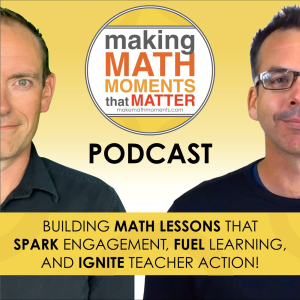
Apply to be a Featured Interview Guest
Book a Mentoring Moment Coaching Call
Are You an Official Math Moment Maker?
FULL TRANSCRIPT
Jon Orr: In this episode is going to be timely for you math leaders, coordinators, K to 12 consultants and coordinators. know, those of you who are thinking about the impact you’ve had this year, you know, on the items, on the things that you’ve done. You know, we get to this point of the year, because I think you’re now, if you’re listening to this in the future, you know, and it’s a different time of the year, like it’s October.
this is like save this one or listen to it now and then earmark it so you come back at the end of the school year and re-listen to it because this is the time of year in May, June, you know, us leaders and coordinators are starting to think about this question that we all need to answer, you know, what were the things that we worked on and try to make impact on this year in terms of math professional development for our teachers, for our student experiences and what was that impact?
And how do I know that I had impact? And I think we get to this point, we have to be able to answer that question. And a lot of us, say systems and structures in place, have a tough time answering that question. And what happens is when we can’t answer that question definitively, we start to kind of go, well, what’s next? What are we gonna do now? Like, what should we change? And I think that’s what we wanna talk about here specifically is when you get to the end of the year, what are you gonna adopt as new?
And when is the right time to do that? When are you going to adapt, which means change, change or switch or fix the things that you were working on? And when are you going to cut? When are you going to abandon some of the practices? And how do you know that it’s the right time to say, abandon these things? So we’re going to talk using the adaptive to adapt, abandon protocol here at the end of the year in that structure. It’s a good time of year to start thinking about that and what you want to do.
If any big takeaway from this episode is to write those three things down and write it in your calendar, that at the end of the year, you want to be able to kind of reflect on using adopt, adapt, and abandon, and then make sure that you hit replay on this episode.
Yvette Lehman: The one that scares me the most in that list is abandon. It scares me because I think about the flywheel analogy. So we use the flywheel analogy all the time when we’re talking about district improvement. we talk about, you know, that analogy works really well because imagine in year one, we’re trying to implement a change in practice, a new resource, whatever it happens to be, whatever the work is, the changes that we’re trying to support.
and it’s such a heavy lift to get it rolling. And then only seven, eight months go by, we feel like, we haven’t had the impact we were hoping for. Let’s abandon it and start with something new next year.
Jon Orr: adopt. See, that’s what scares me the most is the adopt, right? So it’s like, it’s the same, it’s the same thinking. Because exactly, it’s like, I don’t have any evidence that says the things that we were working on this year had impact. So let’s throw them all out, which is your abandon. And let’s do something new. And there’s something new tells, you know, it’s that repeated cycle that we’re starting fresh, we’re starting the flywheel again, and we have to push it a little bit more. And it’s harder to push, it’s harder to
to gain traction. Because it’s it’s, you know, you’re starting a flywheel and you’re starting fresh and then you’re messaging, you know, the folks that you’re supporting as like, here’s another new initiative for you to put on your plate. You know, and everyone’s wondering about, hmm, what happened to last year’s initiatives and last year’s things? Are those important? Does that mean this one’s not that important to like, like, that’s what scares me about the adopt, you know, is like, what?
Are we really, do we really need to do something new? And is that that’s where my worry is in this kind of protocol. I often think about like, more better new and do it in that order, right? Like you’re already doing, like this is where the adapt comes in. It’s like, we’re already doing these things. We have evidence that suggests, now I’m gonna put asterisks around this because like you have evidence that suggests that the things you worked on.
whereas working towards your goals, and I’m put asterisks around your goals, because you have to have those two components to be able to answer that question. And it’s like, if you’ve got some, then do more. Just do more of that. And then think about how can I do that? If I can’t do any more, then think about how to do it better. And if you can’t do it better, and you can’t do more, then figure out what to do new. But then that’s what.
I would say for the adapt stage is think about more better new in that order. And that’s the way that I structure. And this is what we teach our folks who are coming into the end of the year as our partners are. And thinking about what next year’s plan is going to continue doing. We’re going to help them with that strategy as more better new, which is really the adapt, and a protocol. Yes.
Yvette Lehman: So I think what we’re saying is live and adapt. Like that’s where we should see the bulk of the work is in adapting what is working. And I love that idea of, you know, more better new. So let’s take what we’ve been doing and let’s strengthen it. Let’s double down on it. Let’s put more support behind it. Let’s extend it. So I guess that’s a big takeaway from this episode is focused on adapt.
Focus on leveraging what you’ve been doing this past year, this past two years, and just do it better. Do more of it. Let’s talk though about when is it time to abandon? Like true abandon. Like what are the indicators that something is just, this is no longer serving us, and it’s taking up too much of our time and energy and not getting us the results we’re hoping for.
Jon Orr: Mm-hmm. guess you said the key word. What are the indicators? Which means we have to be clear on what we’re actually looking for. And I think if we’re going to do anything, if you are going to do anything new, then the new part should be to get clear on those indicators. I got stuff coming in. Maybe I’m already doing things this year. Have I defined that by the end of the year,
or by the end of six months, or by the of nine months, or maybe by the end of the term, that I should see this impact, and this is how I know it looks like that impact, and this is how I’m gonna track or measure or look for that impact. If you can get clear on that for any, one action item or collection of action items that you’re trying to do this year, then answering your banning question becomes easier, and answering your adopt question becomes easier.
because it’s like, if I do that, then I should see these results. And when we don’t see those results, we can then have easier evidence to start suggesting whether, hmm, should we abandon this? Was it completely off track? Because part of it might be like, we have evidence. The evidence suggests it’s not working. But it doesn’t mean necessarily you need to abandon. It might need to.
all of sudden do the adapt part? Like, what are we going to fix about it? Because we’re so we still think it’s worth not abandoning. We still think it’s it’s on track, we just need to make adjustments. But the key here is the look for us, you know, like your success criteria on the work you’re trying to do. If you if you can’t get clear there, it’s impossible to decide on the the the the the band and stage. What do you think?
Yvette Lehman: I’m going to share an example of one of our districts who is going to abandon a few things next year, and I will tell you why. They are a very large and very ambitious district. And what I mean by that is there are, you know, there’s a laundry list of priorities when you look at the state level, the district level, the department level, you have a laundry list of priorities, and then you have all of these different action items happening. But the problem is all of these action items,
are pulling in different directions and they’re splitting the focus of the team, they’re overwhelming teachers and so one of our steps for next year is to coordinate and streamline and focus. And so there are some objectives and key results that they previously had that we realized are actually just pulling away from the work they really want to do. They’re causing burnout, they’re causing overwhelm for the team that’s providing the support. And so,
in order to leverage the capacity of their team and their subsystems available for professional development, they can’t, they realize through reflection that they actually don’t have the capacity to continue running the way that they have been. They have too many things on their plate. So they looked at the ones that were the most high leverage, the ones that were having the greatest impact, that were helping them get closest to their goals, and they’re going to abandon some of the ones that aren’t.
So typically they’re the ones that are one-offs, know, that are, you know, it’s like a single thing that they’re doing in isolation. They’re not well coordinated or things like for, I’ll give you an example. Sometimes we have districts who are trying to leverage a role for two different purposes. They’re like, you’re going to be a coach, but you’re also going to provide intervention for kids. And what they’re realizing is that there isn’t enough time to do both well. And the intervention that they’re providing for students is a bandaid response. It’s not.
connected to the work they’re doing in their classroom. It’s not sustainable. They’re gonna get this intervention for a short period without enough frequency to really make a difference. Their pre-post-student data suggesting that that intervention isn’t really helping them close gaps. And so that’s one of the things that they’re going to abandon.
Jon Orr: I was going to say, how do we check to see if those abanons are worth abandoning? And obviously, that’s a case-by-case situation of how to make that actual cut. But knowing those targets can help you go, is this the right optimization? Because I think we have a hard time cutting. And generally, you get worried.
But like, how do I know? This is again, the evidence can help you here because a lot of times it’s one of those like, I’ve got so many things that we’re juggling that if I cut that one, how do I know that the whole system isn’t gonna fall apart? Or like all of the results that we have had are gonna get worse because I cut that one. And the symptom there is you don’t know, you don’t have any evidence that suggests it’s working, but you also don’t have any evidence that suggests that is not working.
And that’s a major problem, right? Is to not be able to like, no, so then what would we do? We just don’t abandon anything. And we got to say, again, way too many things. And this is the case where years go by and everyone’s like, well, why are we doing it? And we’re like, well, I don’t know. That’s just what we do.
Yvette Lehman: It’s funny that I said that at the top of this call, it’s like, abandon scares me the most in the, you know, let’s throw this out and start something new. But then sometimes to your point, it’s like, we need to abandon the things that we’ve just always done, but we have no idea whether or not they’re serving us or they’re serving our teachers or students, but we continue to do them and they continue to distract and they continue to pull resources away from the work that’s having the impact.
So that’s a good reflection. I’ve come full circle. It’s like sometimes abandoning is like it’s like we’re too hasty. We want results and we actually had a call recently John where someone said to us, there’s this urgency all the time. We want results immediately and if we didn’t get the results we were hoping for, we abandon and we try something new and that’s what we want to discourage districts from doing.
Like that is not leading to sustainable change and we know that change is going to take time and then the results are going to lag even behind the change. So we have to give things time, but I also don’t think that we should continue to do things just because we’ve done them or because we, you say this all the time, we want to be everything to everyone. So we’re spreading ourselves way too thin. We’re not building those coordinated systems of support that allow for multiple touch points.
And we’re really not having a whole lot of impact. have a, we’ve talked about this before, know, a compliance driven PD calendar, but we’re not really focusing on the things that are making a difference.
Jon Orr: Yeah. hmm, you know, I think there’s one, I’m gonna ask you this after I state this, but I mean, like going back to the flywheel, you know, I think the big takeaway here is that, that consider the flywheel when you’re at this stage of the year. How do I keep the flywheel moving in the right way? And what can I remove from the flywheel and make it spin faster?
Right? Like I want that flywheel to really be humming. And in order to do that, sometimes the cut list is important as well as the fixed list or the adapt list. But knowing the targets help you move that flywheel faster. So if there’s any, major takeaway is to, in a way, slow down at this time of the year, think of the flywheel. Think of the adopt, adapt, abandon protocol. Think of the more better new protocol.
and decide on what is it that we’re trying to do and what are the things that are not getting me there or I don’t have evidence to and then can I eliminate one of those? Because I think what you’re saying is like the worst thing you can do is like just keep going and then we don’t really have any, we’re still throwing spaghetti at the wall but really what we’re doing is adding more spaghetti every year without either eliminating or we’ve eliminated too quickly but we haven’t.
shown that there’s evidence here, which means let’s take your time here at this stage and dedicate time to that being the priority. Because that will pay off in the long term by making the flywheel and trying to figure out how do I make the flywheel move faster.
Yvette Lehman: If you’re listening right now and you have not been a part of the district improvement program or you haven’t are familiar with the roadmap, one thing that I will say anchors the work that we do in the work that we do with districts is having those objectives. Because if you have objectives that are worth strengthening, those are the focus zones. Even if we adjust our action steps, we’re not.
changing the focus every single year. So for example, if you’ve been working on mathematical discourse and it’s like you’re noticing that the action step that you took this year maybe wasn’t yielding the results you were hoping for. wasn’t maybe the your data suggests that it maybe wasn’t the right move at this time for this audience, but your focus next year is still discourse. You’re just going to approach it maybe through a different practice or a different strategy that
continuation with discourse as being the focus is going to root people in the work and create that shared ownership over time. But if every year it’s something new and we don’t have that clarity around what it is we are all aspiring to change over time collectively, that’s where things feel like you describe where it’s like, we’re doing something completely new. I don’t see the connection to what we did last year. Every year they throw something new at us. I might as well just ignore this and keep doing what I’m doing.
Jon Orr: Yeah, was gonna ask that you’ve answered the question I was gonna ask you, you know, if there was one thing that you would say do as new, what would it be? And what you’re saying is if we don’t have objectives, if we haven’t clearly defined what is it we’re trying to achieve for high quality instruction, for high quality experience for our math students, let’s get clear there. That would be the new thing to do is to make sure that in a way it might not necessarily be new, it might be just stating and clarifying and sharing.
that this is the things that we have been working on, but we haven’t formally said like, these are the zones we’re trying to strengthen. That might just be the new thing to do this year. What would be one thing you know everyone should stop doing?
I’m gonna put you on the spot here. One off PD.
Yvette Lehman: One should stop doing one-off PD.
especially when it’s like a series of different topics, different content areas, and or if you want to continue doing one-off PD, I think that you need to set your expectations for what the outcome of that’s going to be. It’s not going to be implementation for most. It’s going to be awareness and awareness only. So if we host, you know, 10 professional development days over the course of the year where teachers are pulled out to engage in this type of learning,
and every single time is a different topic that’s compliance driven and we get to the end of year and we say, well, we covered that and we expect that is going to lead to change in practice in the classroom. need to adjust our expectations.
Jon Orr: Totally. I’m glad you said that. I think you’re right. That is probably the biggest takeaway for what to cut, but also how to get real. We just had a full day PD day and I think one of the things I remember sharing with them was like trying to, if you could do one thing as a leader as well, is to try to shrink the gap between expectation and reality, which means like fill in your understanding of what it takes to create real change.
in terms of math professional development and structure and transfer of practice into the classroom for consistency and on a long-term basis, if knowing what it actually takes to create that, a lot of times we have to fill that gap in ourselves. Like what does that take? What does it look like? Like how much support do I need to provide teachers? And you’re right, like we all, we do plan the one-offs thinking, check, we’ve covered that. And that’s supposed to like be the thing we’re doing this year.
And it and I’ve I’ve slid this in and therefore I’ve I’ve I’ve accounted for professional development this year in these ways, but they’re all one offs. You’re pretty much asking for not only just awareness, but like skimming the surface on. On on, you know, general topics, but then probably also alienating a bunch of teachers who are still seeing these as one offs and going like, OK, great.
you’ve inspired me or you’ve tried to inspire me, but now what? You know, and there’s no now what? So we’d rather you get more narrow. If you’re going to bring in, a guest speaker to do a one-off, how are you going to support it? What does the actions look like afterwards? You know, where is it aligned to what’s happening at PLC? Is it aligned to, you know, the implementation of you say, let’s say your new adopted curriculum or, know, what was happening with your coaching or your support staff at the schools? How do principals understand how that supports their school improvement goals?
These are all questions you got to answer that are effective practices for a well coordinated math improvement plan across the system. But oftentimes we just check off the box. Yep, we’ve accounted for this PD today. And we didn’t actually like shrink the gap between expectation and reality. All right, Yvette, last thoughts.
Yvette Lehman: I think our last thoughts are just, you already mentioned at the top of this call, use the adopt, adapt, abandon protocol to reflect on your work for this year, but don’t be hasty to step away too quickly from something if the momentum is just getting going. It’s going to take more time than you think.
particularly for full implementation across an entire district. takes longer than I think we want it to take, but that’s just the reality. Particularly if you have competing priorities and you don’t have a coordinated system where there’s multiple touch points and multiple levels interacting with these changes that you’re hoping for, as John just described. So don’t abandon too quickly, but think about how you can do more, better, and maybe new if you’re ready for new. If the data suggests that the
you’re ready for new, you’re ready for innovation, people are ready to take things to that next level, then bring in the new at that point. I think we also talked about clarity around our objectives, but also measuring our impact. So if you got to this point in the year and you don’t have a lot of strong evidence to tell you whether or not your action steps this year had the intended outcome,
That’s something to think about for next year. Maybe we continue with the work we’ve been doing, but we get a lot more clear on how we’re going to monitor the impact of those moves next year. So that by this time next year, we’re better positioned to analyze the work we’ve done and measure the impact.
Jon Orr: Well said, well said. And if you are curious about what that system needs to look like and structure your system inside your school or your school district or your school system, head on over to makemathmoments.com forward slash district and learn about, say, our four stage process, learn about the supports that we provide in implementing and installing a system that is coordinated.
to get you results and get you to achieve your goals that you’re wanting to set for your students and for yourselves and for the teachers that you’re supporting. So head on over to makemathmoments.com forward slash district, learn about our support systems and if it makes sense, we can hop on a call and talk about, we can kind of assess your situation and recommend some next steps. we’ll be talking soon about that. So again, makemathmoments.com forward slash district.
Thanks For Listening
- Book a Math Mentoring Moment
- Apply to be a Featured Interview Guest
- Leave a note in the comment section below.
- Share this show on Twitter, or Facebook.
To help out the show:
- Leave an honest review on iTunes. Your ratings and reviews really help and we read each one.
- Subscribe on iTunes, Google Play, and Spotify.
DOWNLOAD THE 3 ACT MATH TASK TIP SHEET SO THEY RUN WITHOUT A HITCH!
Download the 2-page printable 3 Act Math Tip Sheet to ensure that you have the best start to your journey using 3 Act math Tasks to spark curiosity and fuel sense making in your math classroom!
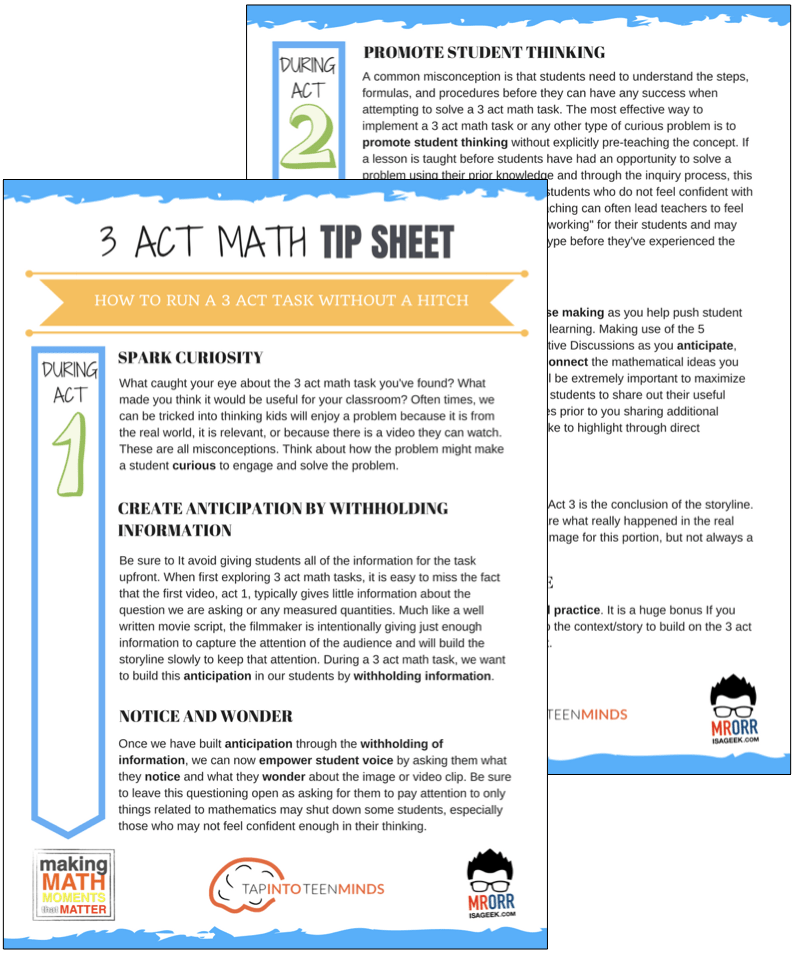
LESSONS TO MAKE MATH MOMENTS
Each lesson consists of:
Each Make Math Moments Problem Based Lesson consists of a Teacher Guide to lead you step-by-step through the planning process to ensure your lesson runs without a hitch!
Each Teacher Guide consists of:
- Intentionality of the lesson;
- A step-by-step walk through of each phase of the lesson;
- Visuals, animations, and videos unpacking big ideas, strategies, and models we intend to emerge during the lesson;
- Sample student approaches to assist in anticipating what your students might do;
- Resources and downloads including Keynote, Powerpoint, Media Files, and Teacher Guide printable PDF; and,
- Much more!
Each Make Math Moments Problem Based Lesson begins with a story, visual, video, or other method to Spark Curiosity through context.
Students will often Notice and Wonder before making an estimate to draw them in and invest in the problem.
After student voice has been heard and acknowledged, we will set students off on a Productive Struggle via a prompt related to the Spark context.
These prompts are given each lesson with the following conditions:
- No calculators are to be used; and,
- Students are to focus on how they can convince their math community that their solution is valid.
Students are left to engage in a productive struggle as the facilitator circulates to observe and engage in conversation as a means of assessing formatively.
The facilitator is instructed through the Teacher Guide on what specific strategies and models could be used to make connections and consolidate the learning from the lesson.
Often times, animations and walk through videos are provided in the Teacher Guide to assist with planning and delivering the consolidation.
A review image, video, or animation is provided as a conclusion to the task from the lesson.
While this might feel like a natural ending to the context students have been exploring, it is just the beginning as we look to leverage this context via extensions and additional lessons to dig deeper.
At the end of each lesson, consolidation prompts and/or extensions are crafted for students to purposefully practice and demonstrate their current understanding.
Facilitators are encouraged to collect these consolidation prompts as a means to engage in the assessment process and inform next moves for instruction.
In multi-day units of study, Math Talks are crafted to help build on the thinking from the previous day and build towards the next step in the developmental progression of the concept(s) we are exploring.
Each Math Talk is constructed as a string of related problems that build with intentionality to emerge specific big ideas, strategies, and mathematical models.
Make Math Moments Problem Based Lessons and Day 1 Teacher Guides are openly available for you to leverage and use with your students without becoming a Make Math Moments Academy Member.
Use our OPEN ACCESS multi-day problem based units!
Make Math Moments Problem Based Lessons and Day 1 Teacher Guides are openly available for you to leverage and use with your students without becoming a Make Math Moments Academy Member.
Partitive Division Resulting in a Fraction
Equivalence and Algebraic Substitution
Represent Categorical Data & Explore Mean
Downloadable resources including blackline masters, handouts, printable Tips Sheets, slide shows, and media files do require a Make Math Moments Academy Membership.
ONLINE WORKSHOP REGISTRATION

Pedagogically aligned for teachers of K through Grade 12 with content specific examples from Grades 3 through Grade 10.
In our self-paced, 12-week Online Workshop, you'll learn how to craft new and transform your current lessons to Spark Curiosity, Fuel Sense Making, and Ignite Your Teacher Moves to promote resilient problem solvers.
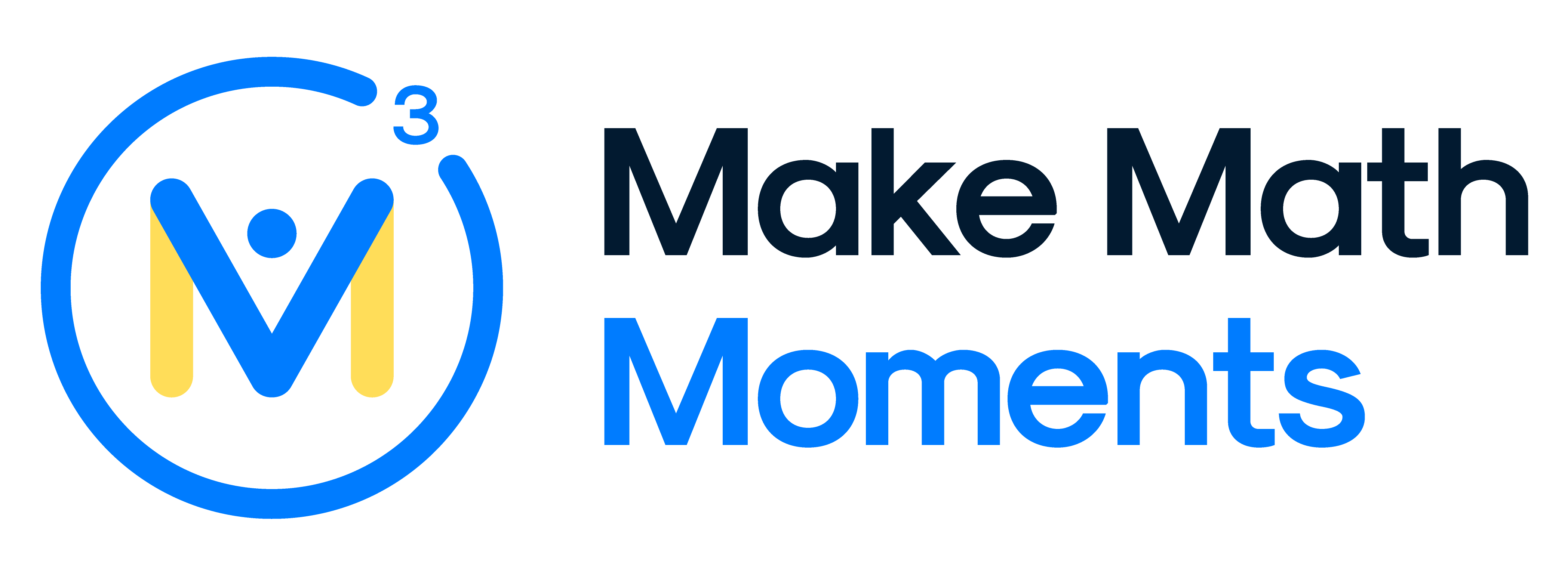



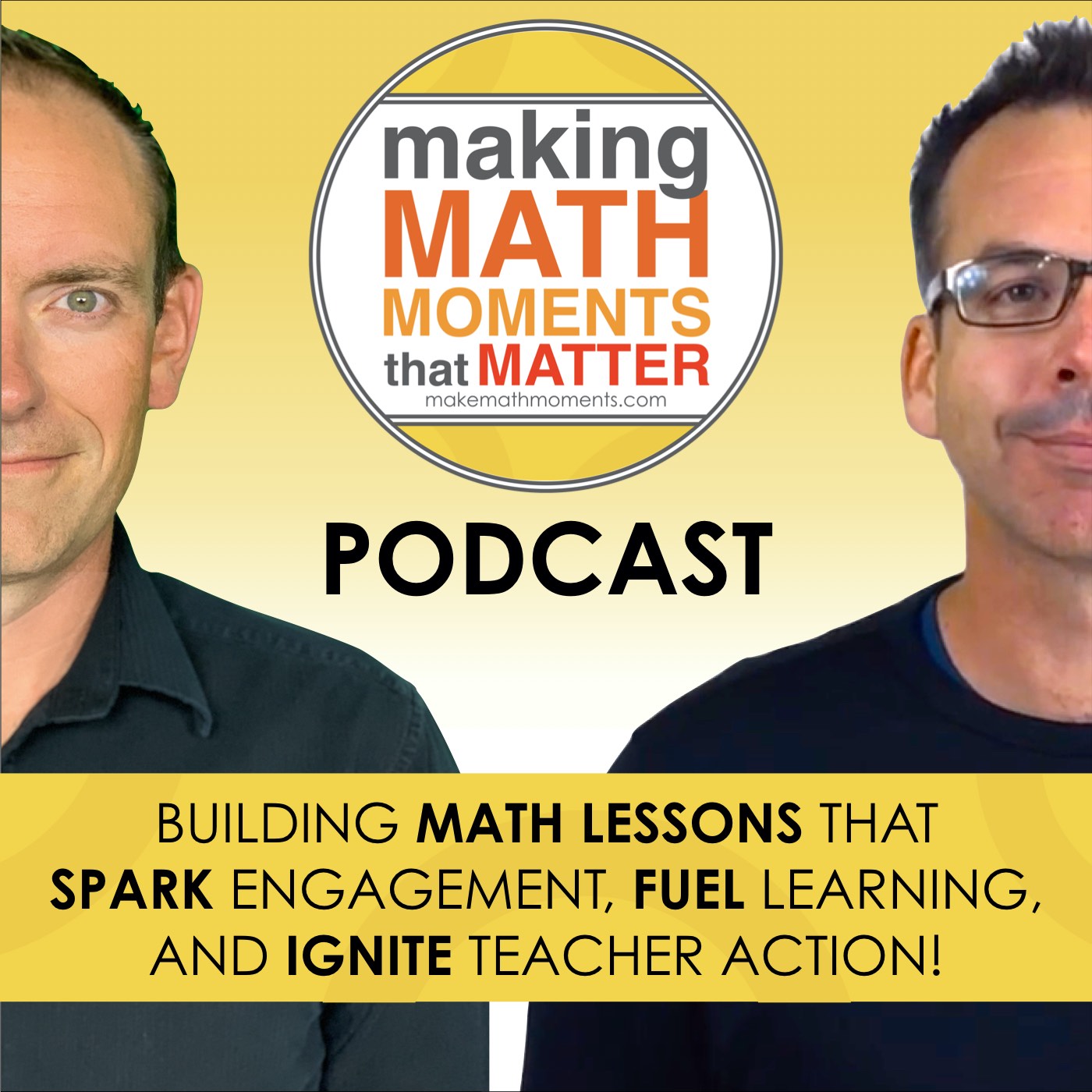


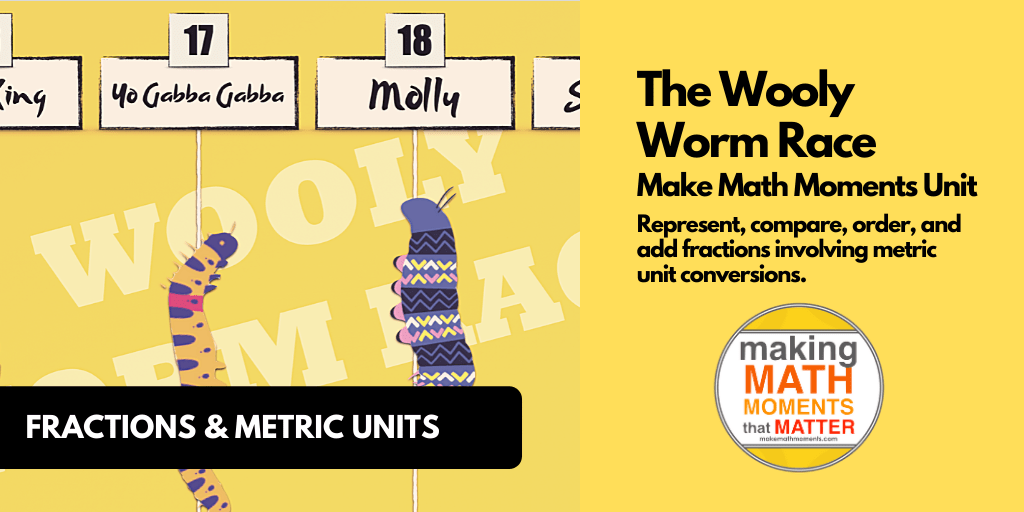
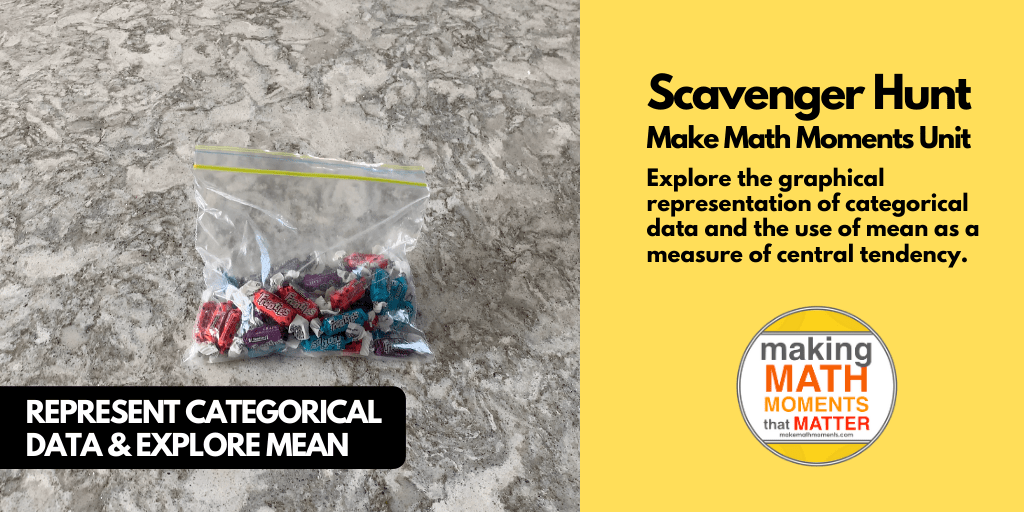

0 Comments